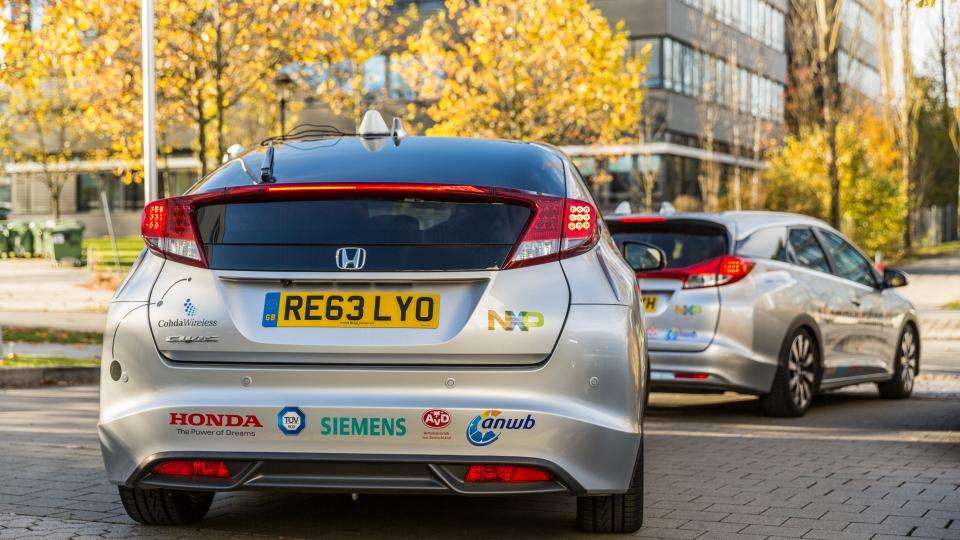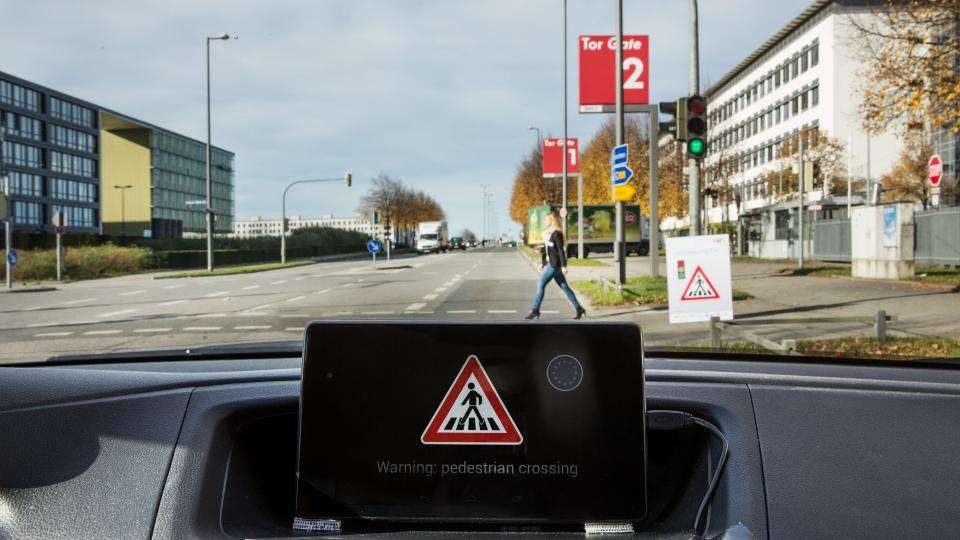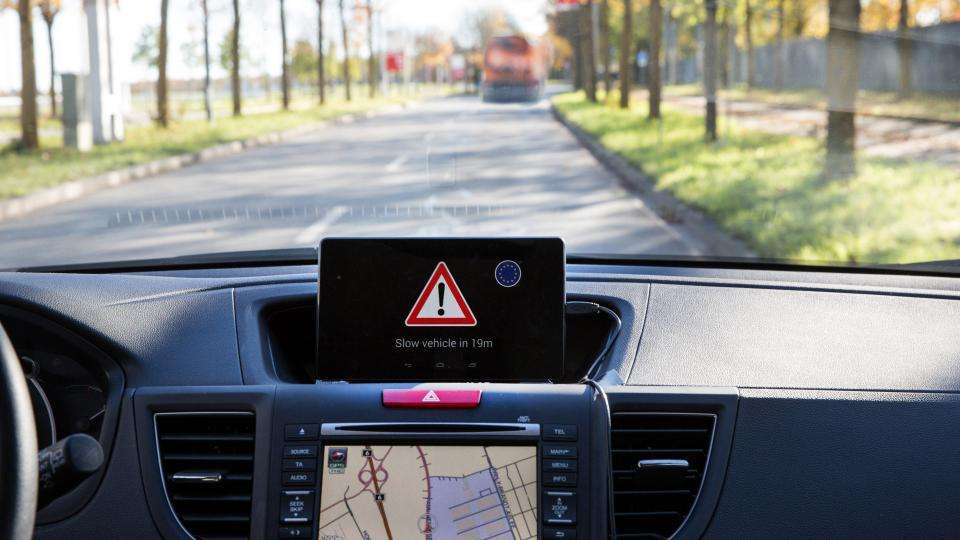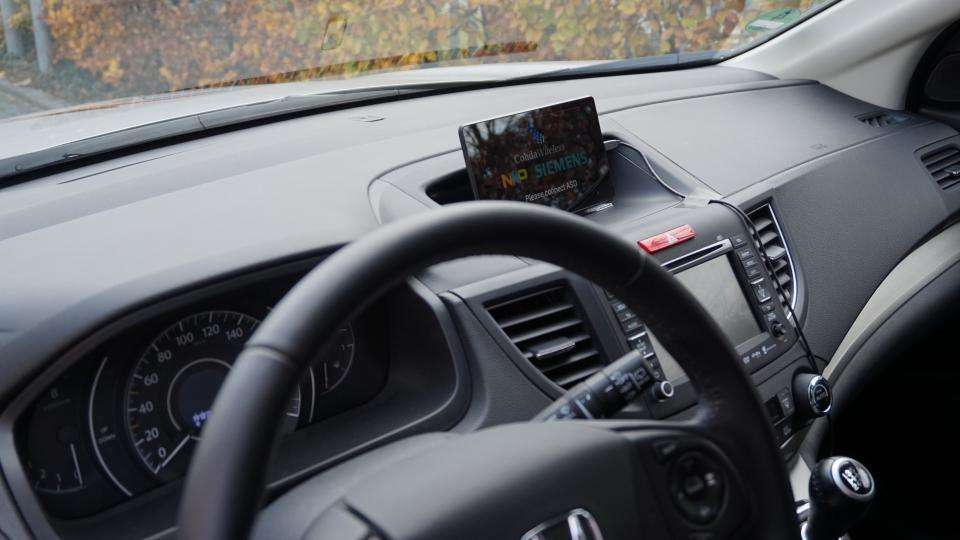NXP, Honda and Siemens have today launched a new breed of intelligent car technology that will make European traffic smarter, greener and safer. The Communicating Cars test drive will take place across the Intelligent Transport Systems Corridor that spans 1,300km of road across Germany, Austria and the Netherlands, starting at the Electronica trade show test grounds in Munich before moving to Vienna, Rotterdam and Helmond where the tour finishes next week.
The initiative will see roads across all three countries fitted with smart traffic lights and intelligent road signs made by Siemens. These will then interact with the Honda-made test cars, which are fitted with NXP's secure vehicle-to-X communication technology, by alerting drivers about upcoming traffic jams and road hazards before they enter their field of vision.

The aim of the test drive is not only to show how smarter traffic control can improve road safety and reduce pollution, but it is also hoped that it will help dramatically reduce road fatalities and minimise the economic loss caused by traffic jams, which cost Europe approximately 7.4 billion euros in 2013 alone according to NXP's calculations.
The ITS corridor has been in the works since 2013, with transport ministers from all three countries helping to get the project off the ground so it will be available for public use next year. It won't just be cars with NXP's car-to-x technology that will benefit from the corridor either, as any type of vehicle-to-x chip will work with the intelligent traffic systems. However, NXP's executive vice-president and general manager for automotive business Kurt Sievers is confident the test drive will kickstart a new wave of interest in the scheme.
"We will demonstrate how to make traffic dramatically smarter and safer on real roads in Europe," he said. "Clearly our initiative will create significant momentum and paves the way for fast deployment of ITS solutions across Europe."

NXP hasn't been working alone, though, as Siemens is providing the infrastructure for the test drive by putting NXP's chips into road signs and traffic lights.
"Siemens is a firm believer that intelligent road infrastructure is ready for deployment," said head of research and development Wilke Reints. "Siemens has also conducted intensive research on the subject of communication between vehicle and infrastructure, and believes that policy makers, highway operators and auto-makers must now work closely together for the pan-European implementation of international initiatives like the ITS corridor. For future generations of products, Siemens will rely on RoadLINK communications technology by NXP."
Honda is also confident that NXP's technology is ready to be rolled out on a global scale. "The increasing deployment of intelligent transportation systems provides excellent potential for road safety and traffic efficiency," said Sven Leonhardt, department manager for functions and material technologies at Honda Europe.
"Our test drive at this event demonstrates that this technology is fully functional. Honda's vision of 'Safety for Everyone' is becoming a reality."

NXP's vehicle-to-X technology uses a derivative of our common Wi-Fi standard, operating at 802.11p rather than 802.11a/g. According to NXP, the technology has a range of over one mile, so you'll know about upcoming accidents or pockets of traffic before you even see them. It will also be able to provide warnings about pedestrians who are waiting at level crossings, slippery road conditions and speed limitations.
More importantly, it will be able to notify you about incoming emergency service vehicles such as ambulances, for example, so you'll know to move lanes and let them pass sooner than simply listening out for the sirens. This will allow the emergency services to have a clearer path toward their destination, and help keep traffic flowing as cars move out of the way.
It won't just be new cars that benefit from this technology either, as both NXP and Honda are keen to retro-fit as many models as possible with their new technology. In older cars, the car-to-X system might take the form of a sat-nav-type device, says NXP's Lars Reger, vice president of research and development and new business, which sits on your dashboard. Newer cars, on the other hand, will integrate the technology into current models without the need for extra hardware, according to Honda.
"We already have [touchscreens] for other systems installed [in our cars] and we'll use what's already equipped," Sven Leonhardt told Expert Reviews. "It's not a big deal to use this as, on the hardware side, we've already got everything."

However, there are still plenty of obstacles in place before this technology can become commonplace in today's cars. For Leonhardt, it's the implementation of infrastructure and encouraging the government to invest in the technology.
"We thought we'd work [with NXP] because we think it's a very good opportunity to push this to the eyes of the public and to the eyes and ears of the government," he said. "I believe they are currently the key stakeholders to become involved more and to be convinced that this is a really good technology to go ahead and endorse. The European car industry strongly supports this type of technology, but our power is limited if the infrastructure side is not on board. Yes, we can have some rather sexy use cases which also have big effects, but the real benefit will only come by including the infrastructure side and the government."
Leonhardt wouldn't be drawn on how long this would take, but Reger was more optimistic. "I would expect between three and ten years for this to become a reality," he said. "If the US is moving with the legislation, then you'll see a landslide in terms of implementation because then everyone knows it's coming and it's a safe bet. I've seen cases in the automotive and infrastructure electronics which say it will easily take a decade, so I'm convinced it will come, but it come as soon as the cars truly get self-driving."
To see NXP's car-to-x technology in action, watch our test drive video below:
